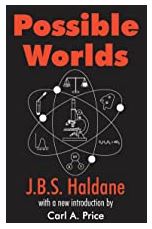|
TRANSLATE THIS ARTICLE
Integral World: Exploring Theories of Everything
An independent forum for a critical discussion of the integral philosophy of Ken Wilber
 David Christopher Lane, Ph.D.
Professor of Philosophy, Mt. San Antonio College Lecturer in Religious Studies, California State University, Long Beach Author of Exposing Cults: When the Skeptical Mind Confronts the Mystical (New York and London: Garland Publishers, 1994) and The Radhasoami Tradition: A Critical History of Guru Succession (New York and London: Garland Publishers, 1992). David Christopher Lane, Ph.D.
Professor of Philosophy, Mt. San Antonio College Lecturer in Religious Studies, California State University, Long Beach Author of Exposing Cults: When the Skeptical Mind Confronts the Mystical (New York and London: Garland Publishers, 1994) and The Radhasoami Tradition: A Critical History of Guru Succession (New York and London: Garland Publishers, 1992).If there's a singular topic Integral students need to be educated on it is evolutionary theory, given their frequent but uninformed use of the term "evolution". These short biographical chapters about evolutionary theorists have been written by different philosophy students of professor David Christopher Lane. (FV)
THE EVOLUTIONARY SCIENTISTS
Glimpses into the Life and Work of Great Thinkers in Evolutionary Biology
Coyne|
Crick|
Darwin|
Dawkins|
Diamond|
Dobzhansky|
Eldridge|
Gould|
Haldane|
Hamilton |
Lamarck|
Lovelock|
Mayr|
Mendel|
Monod|
Spencer|
Trivers |
Wallace |
Weismann |
Williams |
E.O. Wilson
J.B.S. HaldaneFaizaan MerchantJohn Burdon Sanderson Haldane was born on November 5, 1892, in Oxford, England to a prominent, scholarly family. At age 8, he started working in a home lab with his father, John Scott Haldane, who was a physiologist at Oxford University. Haldane was an autodidact and developed interests in a variety of different fields at a very young age. He used self-experimentation as a method of discovering more about the human respiratory system. In some of these experiments, Haldane would put himself in a decompression chamber and test different levels of gasses and its effects on humans, rendering him unconscious many times.  J.B.S. Haldane Throughout his early school years, Haldane was a gifted student. He attended Eton College and the New College at the University of Oxford, graduating with honors in Mathematics in 1912 and the Classics in 1914. Haldane's research was interrupted when he joined the Black Watch in the First World War, serving in France and Iraq. He released himself from the commission in 1920 and started a fellowship at the New College at the University of Oxford. There, he studied many different subjects, ranging from physiology to genetics. In 1924, Haldane published a popular book called Daedalus, which covered a range of topics including ethics within science and even alluded to the future of human evolution through “cloning”, a term he had created. He then moved to Cambridge University where he taught Biochemistry and became more engrossed in studying the mathematical aspect of genetics. In the 1930s, Haldane became the Professor of Genetics at the University College London where he stayed for the majority of his academic career. In 1932, he had released Causes of Evolution, a book summarizing a group of papers and lectures he had created about mathematical modeling using Mendelian genetics and Darwin's theory of evolution. Haldane contributed a large amount of research towards genetics, discovering mathematical models that allowed for the identification of certain parts of genes that affect human traits such as color blindness. In 1956, Haldane left the University College London and moved to India, a place he had wanted to travel to after visiting during the First World War. Haldane took Indian citizenship and became the head of Biometry at the Indian Statistical Institute in Kolkata, India. There, he created inexpensive and innovative ways to research plant genetics. Haldane died on December 1, 1963, in Bhubaneswar, India due to colon cancer. J.B.S. Haldane was an important figure of the 20th century who contributed to many different scientific fields, yet his most famous discoveries are found within evolution and genetics. One of his first investigations into Mendelian genetics occurred in 1908 when he, along with his sister Naomi Mitchison, began breeding guinea pigs and mice in order to show genetic linkage in mammals. This demonstrated that certain genetic traits are inherited together due to their close proximity to each other. Eventually, Haldane wrote a paper about genetic linkage, called the “Reduplication in Mice,” in 1915 while he was in the front-line trenches during the First World War! He later demonstrated genetic linkage in other animals such as chickens and later humans. In 1929, Haldane wrote an article called “Origin of Life”, which described the prehistoric ocean as a “hot dilute soup” (Haldane, 1929). This led to the Oparin-Haldane hypothesis, also known as the Primordial Soup Theory. The theory described the early days of Earth's reduced atmosphere as an energy source, causing the ocean below to endure many different chemical reactions, leading to the creation of lifeless cells in different organic compounds. These organic compounds, Oparin and Haldane hypothesized, led to the first live cells, which are considered to be the origin of life on Earth. Haldane's most well-known contribution is being one of the founding fathers of population genetics along with Ronald Fisher and Sewall Wright. Population genetics is the study of genetic variation within a given population. It became one of the cornerstone disciplines which influenced and caused The Modern Synthesis. The Modern Synthesis was the moment when Darwinian evolution merged with Mendelian genetics to create the unified theory of evolution. Given Haldane's mathematical background, he began working on trying to discover a connection between Darwin's theory of natural selection and Mendel's work on genetics through the use of mathematical evidence. He published a series of ten papers between 1924 and 1932, called A Mathematical Theory of Natural and Artificial Selection, in which he summarized that “A satisfactory theory of natural selection must be quantitative. In order to establish the view that natural selection is capable of accounting for the known facts of evolution, we must show not only that it can cause a species to change, but that it can cause it to change at a rate which will account for present and past transmutation.” (Haldane, 1924, p. 19). The papers were later summarized in his famous book called Causes of Evolution in 1932. In these papers, Haldane used mathematical and statistical methods to predict how widespread a mutated gene would be inherited across a population and at what rate it would occur in terms of generations. He analyzed mutated alleles or mutations in certain pieces of DNA within a gene. He then looked at how the mutation of the gene affected the organism's fitness, or ability to reproduce. For example, if a beneficial mutation occurred within a gene of an organism, allowing for trichromatic vision, or the ability to see more colors, this would allow that organism to find more types of food. Since more food would be available for the organism, their fitness would increase when compared to the rest of the population without that mutation. As the population of organisms with the mutated gene reproduced more, in some cases, they would replace the population without the mutated gene. Haldane created theoretical scenarios with fixed variables for population sizes, the number of offspring produced, and the rates at which a mutated gene would be inherited in order to form mathematical formulas and models of prediction. He also coined the phrase “cost of natural selection” which referred to the deaths that must occur for a newly mutated gene to be substituted into a population of organisms. He applied these models to real-world scenarios, such as the evolution of the body color of peppered moths during the Industrial Revolution. In most cases, his models held up and were able to predict data accurately. Haldane had developed a way to quantitatively show that Darwin's theory of natural selection was a direct effect of the role Mendelian genetic inheritance played in evolution. J.B.S Haldane was an interesting and influential figure who made new discoveries in a range of disciplines: genetics, evolutionary theory, physiology, and biometry to name a few. He was one of the founding fathers of population genetics and helped bring about the Modern Synthesis through the use of biology and mathematics. Further Reading1. Possible Worlds, Routledge; 1 edition (October 2, 2001) 2. On Being the Right Size and Other Essays, Oxford University Press (May 23, 1985) 3. Daedalus or Science and the Future, 1923 (lecture)   
MSAC Philosophy Group
The theory of evolution has a long history. However, it was not until Charles Darwin and Alfred Russel Wallace discovered that the wide variety of species we presently see were largely the result of natural selection did evolutionary studies have a solid, scientific basis. In the past one hundred and sixty years, a number of eminent biologists have contributed to our understanding of how complex life forms emerged from simpler, more rudimentary ones.
Comment Form is loading comments...
|